BMW i4 vs Mercedes E Class – Which model is better for everyday use?
Everyday use, family trips or long-distance drives – here’s where the differences show.
Discover whether BMW i4 or Mercedes E Class fits your lifestyle better.
Costs and Efficiency: When it comes to price and running costs, the biggest differences usually appear. This is often where you see which car fits your budget better in the long run.
BMW i4 has a hardly perceptible advantage in terms of price – it starts at 49400 £, while the Mercedes E Class costs 50500 £. That’s a price difference of around 1119 £.
As for range, the BMW i4 performs clearly better – achieving up to 613 km, about 497 km more than the Mercedes E Class.
Engine and Performance: Power, torque and acceleration say a lot about how a car feels on the road. This is where you see which model delivers more driving dynamics.
When it comes to engine power, the BMW i4 has a slight edge – offering 601 HP compared to 585 HP. That’s roughly 16 HP more horsepower.
In acceleration from 0 to 100 km/h, the BMW i4 is slight quicker – completing the sprint in 3.70 s, while the Mercedes E Class takes 4 s. That’s about 0.30 s faster.
In terms of top speed, the Mercedes E Class performs hardly perceptible better – reaching 250 km/h, while the BMW i4 tops out at 225 km/h. The difference is around 25 km/h.
There’s also a difference in torque: BMW i4 pulls hardly perceptible stronger with 795 Nm compared to 750 Nm. That’s about 45 Nm difference.
Space and Everyday Use: Beyond pure performance, interior space and usability matter most in daily life. This is where you see which car is more practical and versatile.
Both vehicles offer seating for 5 people.
In curb weight, Mercedes E Class is a bit lighter – 1810 kg compared to 2070 kg. The difference is around 260 kg.
In terms of boot space, the Mercedes E Class offers somewhat more room – 540 L compared to 470 L. That’s a difference of about 70 L.
When it comes to payload, Mercedes E Class clearly perceptible takes the win – 640 kg compared to 480 kg. That’s a difference of about 160 kg.
Who comes out on top?
Overall, the BMW i4 shows itself to be is largely superior and secures the title of DriveDuel Champion.
It convinces with the more balanced overall package and proves to be the more versatile choice for everyday use.

BMW i4
BMW i4
The BMW i4 beautifully merges the dynamism of a saloon with the efficiency of an electric vehicle, offering a truly exhilarating driving experience. Its design seamlessly blends elegance and athleticism, highlighting BMW's dedication to both aesthetics and performance. Inside, the i4 boasts a high-tech cockpit that harmonises luxury with intuitive technology, allowing drivers to stay connected while on the move.
details @ press.bmwgroup.com
@ press.bmwgroup.com
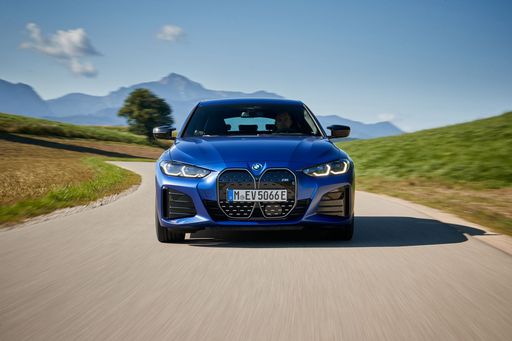 @ press.bmwgroup.com
@ press.bmwgroup.com
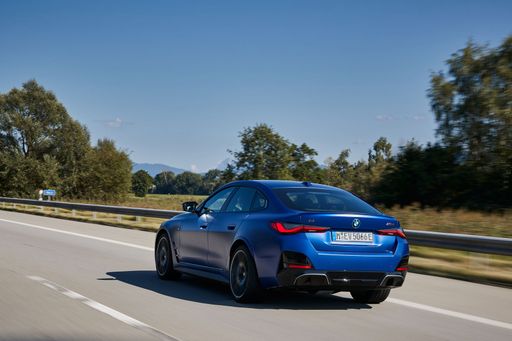 @ press.bmwgroup.com
@ press.bmwgroup.com
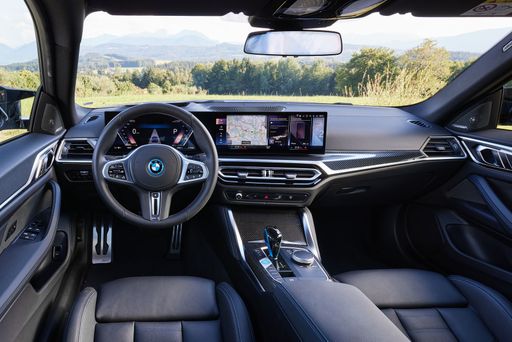 @ press.bmwgroup.com
@ press.bmwgroup.com
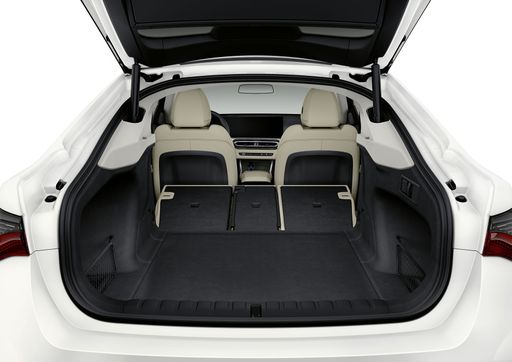 @ press.bmwgroup.com
@ press.bmwgroup.com
Mercedes E Class
The Mercedes-Benz E-Class Saloon epitomises sophistication and innovation, offering a seamless blend of elegant design and cutting-edge technology. Its refined interior ensures exceptional comfort, making every journey a luxurious experience. The driving dynamics are impressively balanced, providing both agility and smoothness, perfect for both city driving and long-distance cruising.
details @ group-media.mercedes-benz.com
@ group-media.mercedes-benz.com
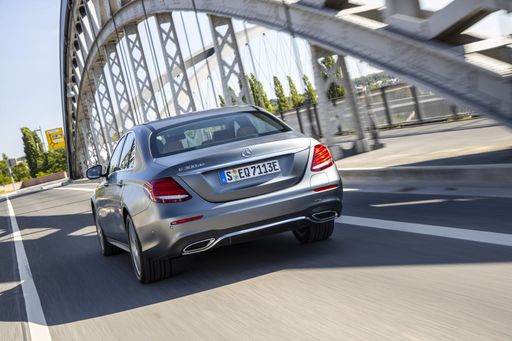 @ group-media.mercedes-benz.com
@ group-media.mercedes-benz.com
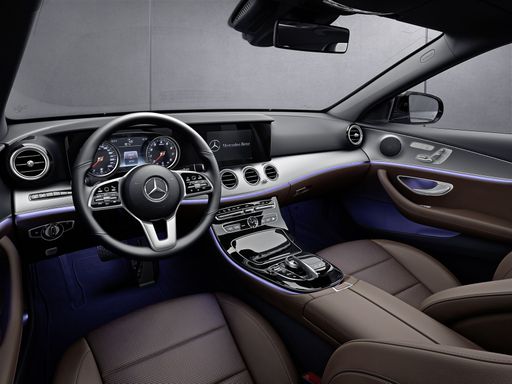 @ group-media.mercedes-benz.com
@ group-media.mercedes-benz.com

|

|
|
|
|
Costs and Consumption |
|
|---|---|
|
Price
49400 - 62500 £
|
Price
50500 - 119700 £
|
|
Consumption L/100km
-
|
Consumption L/100km
1.5 - 7.5 L
|
|
Consumption kWh/100km
14.7 - 16.7 kWh
|
Consumption kWh/100km
-
|
|
Electric Range
514 - 613 km
|
Electric Range
101 - 116 km
|
|
Battery Capacity
67.1 - 81.3 kWh
|
Battery Capacity
21.20 kWh
|
|
co2
0 g/km
|
co2
39 - 172 g/km
|
|
Fuel tank capacity
-
|
Fuel tank capacity
50 - 66 L
|
Dimensions and Body |
|
|---|---|
|
Body Type
Hatchback
|
Body Type
Sedan
|
|
Seats
5
|
Seats
5
|
|
Doors
5
|
Doors
4
|
|
Curb weight
2070 - 2285 kg
|
Curb weight
1810 - 2390 kg
|
|
Trunk capacity
470 L
|
Trunk capacity
370 - 540 L
|
|
Length
4783 mm
|
Length
4949 - 4959 mm
|
|
Width
1852 mm
|
Width
1880 mm
|
|
Height
1448 mm
|
Height
1468 - 1480 mm
|
|
Max trunk capacity
1290 L
|
Max trunk capacity
-
|
|
Payload
445 - 480 kg
|
Payload
530 - 640 kg
|
Engine and Performance |
|
|---|---|
|
Engine Type
Electric
|
Engine Type
Petrol MHEV, Plugin Hybrid, Diesel MHEV
|
|
Transmission
Automatic
|
Transmission
Automatic
|
|
Transmission Detail
Reduction Gearbox
|
Transmission Detail
Automatic Gearbox
|
|
Drive Type
Rear-Wheel Drive, All-Wheel Drive
|
Drive Type
Rear-Wheel Drive, All-Wheel Drive
|
|
Power HP
286 - 601 HP
|
Power HP
186 - 585 HP
|
|
Acceleration 0-100km/h
3.7 - 6 s
|
Acceleration 0-100km/h
4 - 8.5 s
|
|
Max Speed
190 - 225 km/h
|
Max Speed
222 - 250 km/h
|
|
Torque
400 - 795 Nm
|
Torque
320 - 750 Nm
|
|
Number of Cylinders
-
|
Number of Cylinders
4 - 6
|
|
Power kW
210 - 442 kW
|
Power kW
137 - 430 kW
|
|
Engine capacity
-
|
Engine capacity
1993 - 2999 cm3
|
General |
|
|---|---|
|
Model Year
2025
|
Model Year
2024 - 2025
|
|
CO2 Efficiency Class
A
|
CO2 Efficiency Class
E, F, B, D
|
|
Brand
BMW
|
Brand
Mercedes-Benz
|
What drivetrain options does the BMW i4 have?
The BMW i4 is available as Rear-Wheel Drive or All-Wheel Drive.
The prices and data displayed are estimates based on German list prices and may vary by country. This information is not legally binding.
